Purpose The purpose of this study is to deeply understand what high school student athletes are doing as athletes and how they are transformed into student athletes from studying and exercising simultaneously. Through this, to understand the life of student wrestlers and to provide basic data for rational improvement of school athletic department. Methods Participants of the study selected one student in the second grade and two students in the third grade at Woosu high school in metropolitan. Data was collected through in-depth interviews, participant observation, and document analysis. The collected data was analyzed using Domain Analysis and Taxonomic Analysis by Spradley(1979). To assure the credibility of the data, additional checks and analysis were conducted with the participants, and the research process was examined by experts. Moreover, the common contents of the data were included in the research results with multilateral verification. Results Woosu high school wrestling student athletes were recognized as athletes as a training life to lose their dreams, a school life to stop their work. However, since student athletes have been studying and exercising together, they have been transformed from a trainee to a motivated active, a student who is reborn in the school community, and transformed a reflective student athlete to an immature player on a daily life. Conclusion The policy of the school athletic department to study and exercise together has a positive effect on student athletes and has a good effect. The introduction and practice of this system can expect true student athletes and establish elite physical education right away.
PURPOSE This study compared and analyzed the current status, system, and trend of evaluation and operation of member sports organizations of the Korean Sport & Olympic Committee from 2006 to 2020. METHODS A literature study was conducted for this study. RESULTS The 15-year evaluation was developed through three periods: preparation, execution, and construction. The preparation stage (2006–2009) was when the evaluation index development and operation system were established. The execution stage (2010–2016) is a critical time; when the current system was established. This was when evaluation perception was spread in the sports world and continuous changes such as evaluation system and operation, indicators. Finally, the construction stage (2017–2020) was when the evaluation system was established after integrating the Korean Sport & Olympic Committee and the National Sports Council. CONCLUSIONS It played a role in promoting balanced growth from organizational management to ethical management of sports organizations through preparation, execution, and construction. Further, the evaluation reflected the continuous development and change of the Korean sports community and one organizational assessment.
PURPOSE This study aims to analyze research trends on the social capital in sports. METHODS A total of 69 papers published until December 2020 were selected as research subjects. Further, Excel, KrKwic software, and NetDraw function of the UCINET 6 program were used for analysis. RESULTS First, social capital research on sports has shown quantitative growth since 2010. Second, the studies were conducted on sports participants such as general, elderly, college students, adolescents, foreigners, and the disabled, showing the highest frequency of research subjects. Third, quantitative research conducted based on the research method were several. Fourth, single-author studies were the highest. Fifth, as the result of the analysis on the publication journal, the Journal of the Korean Physical Education Association was shown the highest. Sixth, due to frequency analysis of the thesis keywords, “social capital,” “sports participation,” “action intention,” “social capital type,” “living sports participation,” and “youth” were shown the highest. Seventh, as a result of centrality analysis between keywords through the network analysis, “sports participation” in connection centrality, “health-promoting lifestyle” in proximity centrality, and “sports participation” in mediation centrality were found as the highest. CONCLUSIONS The significance of social capital in sports is more important than others because it is a fundamental element for creating a culture where more people can enjoy sports moderately in Korea, where capitalism and liberal democracy were adopted as the governing system. Therefore, this study can be a vital resource significantly contributing to the understanding and active use of social capital, a significant factor in developing sports in Korea.

Purpose and Methods The purpose of this study is to clarify the concepts of ‘youth sport policy’ and policy areas as an alternative to school physical education concept and to provide a core conceptual framework for the development and implementation of youth sports policy in the future. Results The notion of youth sport policy is a process of seeking rational decision-making and optimal alternatives to solve the social problems associated with sports participation of youth in elementary school(aged 6 years) to high school(aged 18 years). The concept of 'youth sport' can reflect modern culture rather than 'school physical education' and it can be seen as more future oriented for lifelong participation in sports. The areas of youth sport policy are classified into physical education, school sport, and community sport. Physical education refer to the physical education classes operated by the Ministry of Education, and the school sport refers to the sports activities that take place throughout the school. Community sport is sports activities that are carried out outside the school by the choice of youth, which is the area where cooperation between the public sector and the private sector is needed. Conclusion In conclusion, healthy and active life for youth is required to establish cooperative governance of related organizations in order to ensure proper linkage between youth sport policy areas. Through this, it is necessary to solve the social problems of youth and promote their lifelong enjoyment of sport more consistently, efficiently and effectively.

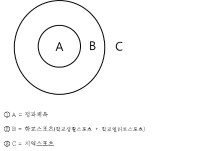
The purpose of this study was to find out what experiences pre-service physical education teachers have before, during and after student teaching along with teacher educational meanings in the experiences. The subjects of this study were 7 senior students in department of physical education of B university located in A city. The data were collected through daily records of student teaching and in-depth interview(group and individual). The collected data were analyzed using the methods of Smith & Kinsella(2009) and Spradley(1980). The analysis showed expectation for learning(knowledge, skills, behavior) and realization(feeling, stimulation, awareness) before student teaching, fight and compromise with 'me'(body, spirit, life), 'you'(teacher, student) and 'it'(instruction, environment, episode) during student teaching, and regret of 'instruction'(plan, execution, evaluation), 'relationship'(forming, maintaining, improving) and 'role'(teacher, attitude, sense of calling) after student teaching. These characteristics were discussed in 4 aspects of educational meanings including seeking essence, seeking forms, seeking roles and seeking status. Lastly, the study suggested unification of student teaching contents, introduction of exclusive teacher system for student teaching, establishment of evaluation system for student teaching program and development of field ability strengthening program available to connect with student teaching in physical education.
PURPOSE This study aimed to a) develop suitable screening tools for identifying gambling severity in Korea and b) explore factors that affect the gambling severity index in order to prevent Korean sports betting users from easily falling into gambling addiction, thus providing practical and useful guidelines in this regard. METHODS This study examined Korean sports fans who had experiences of participating in sports betting (Sports Toto), a legal sports betting system in Korea. Toward this end, an online survey was conducted from May 10 to June 25, 2022. A total of 214 questionnaire results, excluding 23 who gave insincere and/or incomplete answers, were analyzed for normal distribution through skewness and kurtosis, and subscale scores were calculated after performing exploratory factor analysis and reliability analysis using Cronbach’s α. RESULTS A psychological gambling severity index and behavioral gambling severity index were developed based on a stepwise regression analysis, which was conducted using the demographic characteristics of domestic sports betting participants and their lifestyle habits (e.g., smoking and drinking, problem gambling severity index, self-control scale, and gambling expectation scale). CONCLUSIONS First, factors affecting the psychological gambling severity index were identified (having a job, job stability, and security) along with lifestyle habits (smoking and drinking). Second, gender, occupational characteristics, full-time employment, confidence in self-control, and desire for self-improvement were indicated as significant factors that influenced the behavioral gambling severity index.

Purpose The purpose of this study is to grasp consumers' perception of badminton racket brand image using MDS and ISA. Methods To do this, we conducted questionnaires on those who participated in badminton and had experience of participating for 6 months or more in Seoul and Gyeonggi province from April 12 to 28, 2017, selected and analyzed a total of 313 copies as valid samples of this study. Results The results of study are as follows. First, as a result of MDS analysis, it showed that only the price of brand image attributes were in order of Trion > Joobong > Lining > Victor > Yonex, and the other attributes(Design, Functionality, Quality, Awareness, Advertising image, Event, Color, Popularity, Sophistication, Originality, Trust, Service) were in order of Yonex > Victor > Lining > Joobong > Trion. Second, as a result of ISA analysis, in I quadrant, Yonex showed functionality, quality, sophistication, and trust and Trion showed price, design, functionality and quality, Victor showed price, design, functionality, quality, color, sophistication, trust, service, and Joobong showed price, functionality, quality, and trust in this area. In quadrant Ⅱ as concentrated area, Yonex showed price and service, Trion showed color, trust, service, Victor showed price, Lining showed trust and service, and Joobong showed service in this area. In quadrant Ⅲ as low rank, Yonex showed advertising image, event, Trion showed awareness, advertising image, event, popularity, sophistication, originality, Victor showed advertising image, event, popularity, originality, Lining showed awareness, advertising image, event, popularity, originality, and Joobong showed design, advertising image, color, popularity, sophistication in this area. In quadrant IV as excess avoidance, Yonex showed design, awareness, color, popularity, originality, Victor showed awareness, Joobong showed awareness, event, originality in this area.



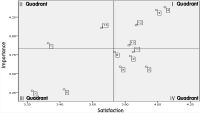





To provide the distribution of cardiorespiratory fitness including Bruce treadmill exercise time and estimated peak oxygen uptake (VO2peak) and investigate association with cardiorespiratory fitness and metabolic syndrome, sedentary lifestyle, or education level among Korean adults. Analysis of data on 2,006 adults (19-64 yr) who had completed a maximal grade treadmill exercise test, from the Sports Institute of Sports Science Fitness Standards (KISS FitS) project 2014-2015. The mean maximal exercise time was 11’26’‘, 11’18’‘, 11’06’‘, 10’03’‘ and 8’51’‘ (minutes and seconds) for men 19-29, 30-39, 40-49, 50-59 and 60-64 years of age, respectively, for women, it was 9’49’‘, 9’09’‘, 8’42’‘, 8’01’‘ and 7’33’‘ for the corresponding age groups. The mean peak oxygen uptake was estimated as 42.3, 41.8, 41.2, 37.6 and 33.6 ml/kg/minute for men 19-29, 30-39, 40-49, 50-59 and 60-64 years of age, respectively, For women, it was 34.0, 31.8, 30.3, 28.0 and 26.4 ml/kg/minute for the corresponding age groups. A positive association between cardiorespiratory fitness level and education level was observed for both men and women. Furthermore, participants with sedentary lifestyle had a significantly lower cardiorespiratory fitness than participants with activity lifestyle. Finally, Men with moderate and high fitness level had 50% and 87% lower odds for the metabolic syndrome, and women had 48% and 50% lower odds for the metabolic syndrome, respectively, than the ones with low fitness level after adjustment for age, smoking, alcohol intake, and sedentary lifestyle. These results can be used to track future Korean assessments and to evaluated interventions. The differences in fitness status by education level, sedentary lifestyle or metabolic syndrome can also be used to develop health policies, program and educational services.

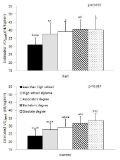
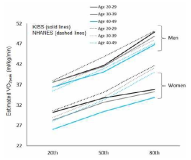
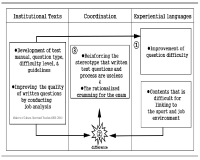
Purpose There are two purposes of this study; First is to investigate the reality of curriculum in the qualification system through the coordination process between participants’ experiences and institutional texts. Second is to identify the light and shade of the educational logics underlying the certificate courses of Level 2-sport-for-all-coach. Methods By relying on the institutional ethnography approach(Smith, 2005), the data were collected through on-site materials and semi-structural interviews with seven coaches who participated in the qualification programmes after 2015 system revision. The data were analyzed by mapping the social organization. Results The analysis shows two key findings. First, participants faced inconsistencies with institutional texts in the subcategories of qualification system and experienced (self-)rationalization process including doubt, complaint, acceptance and compromise toward the system. Second, Performance pedagogy and Craft pedagogy were operating at the root of the current qualification system, and the two logics led to the fundamental limitations(unlinked educational content, passive educational activity, and unsystematic educational operation) for the improvement of system. Conclusion The activation of the retrospective approach to distinguish the pros and cons of various educational logics was suggested. These findings are expected to provide useful implications for building the future framework to educate sport-coaches more systematically.

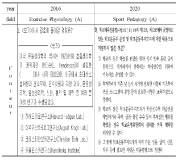
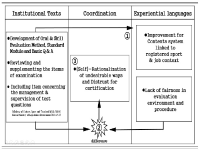
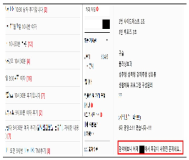
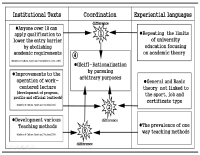
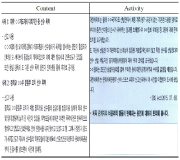
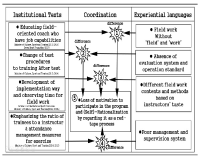
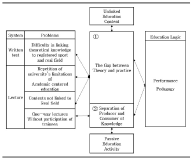
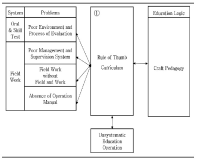

[Purpose] The purpose of this study was to examine acceptance intentions of Sports O2O Service Potential consumers using the revised model of goal-directed behavior. [Methods] The 330 surveys were distributed to potential consumers through convenience sampling method for pilot study. Due to the reliability of data, 42 samples were discarded and 288 samples were put to actual analysis. Then data were analyzed for frequency analysis, reliability analysis, correlation analysis and structural equation modeling technique via SPSS 23.0 and AMOS 22.0. [Results] The results of this study were as follows. First, attitude and subjective norm had a positive effect on desire. Second, perceived behavior control did not affect on desire but had a positive affect on acceptance intention. Third, positive anticipated emotions had a positive effect on desire but negative anticipated emotions did not effect on desire. Fourth, desire had a effect on acceptance intention. [Conclusions] According to the result, sports O2O service operators should do best to improve consumers positive attitude. Especially, they have to establish marketing strategies of introducing strong aspects of sports O2O services. Also, providing easy processes and intuitive interface are needed to consumers. To promote sports O2O services to potential consumers which is unfamiliar to that services, it is important to induce easy ways for potential consumers to experience sports O2O services.


